Final Stop: California
- Aaron Schorr
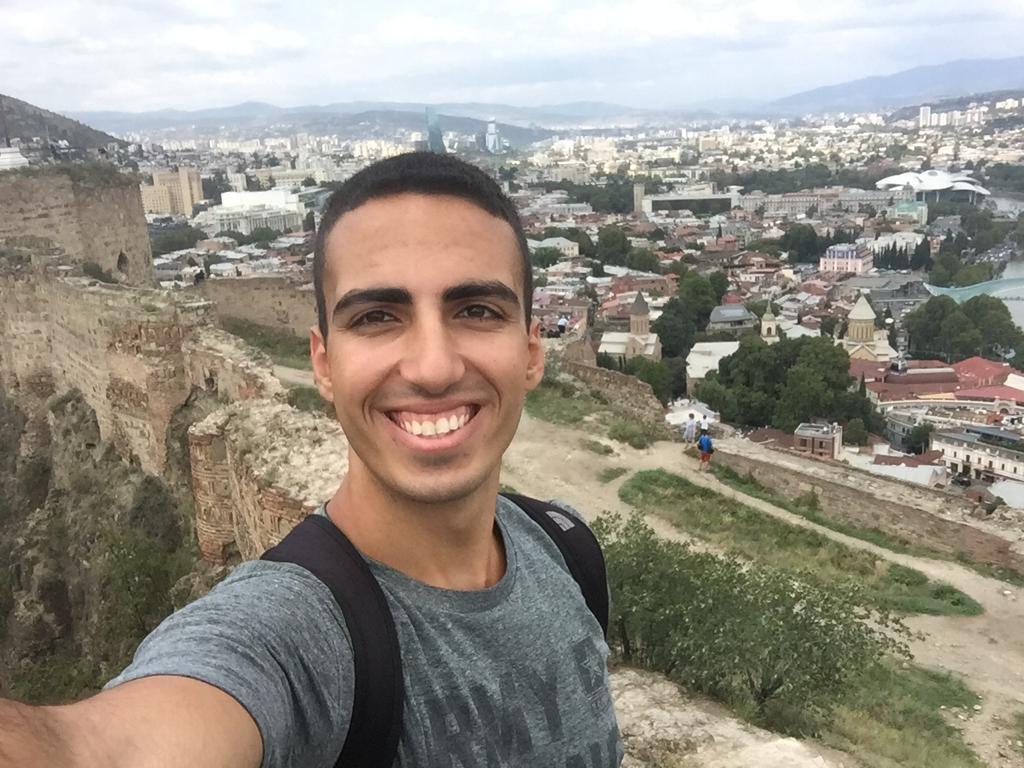
- Feb 1, 2021
- 21 min read
Updated: Aug 9, 2021
I apologize for the length of this post, but California has given me lots of food for thought.
California was experiencing one of the worst COVID outbreaks in the world and had taken severe measures (by American standards) to try and curb the spread. According to what we had read online, travelers from out of state were “requested” to quarantine, hotels couldn’t accept non-essential workers, and restaurants were to operate as takeout-only everywhere south of Sacramento. When we passed an inspection station shortly past the state line, then, we were quite worried that we would be turned back or instructed to quarantine. Our fears were for nothing, however, as it was nothing more that an agricultural inspection helping deepen the stereotypes that California was its own country.

We stopped to charge in the "border town" of Needles as the sun set and Jake went into a Dairy Queen to get ice cream. He emerged laughing and showed me a sign he had seen inside, titled “FAQ about coronavirus”. One of the questions was: “Why doesn’t your staff wear masks when serving customers?” to which they provided the priceless answer: “We are closely following government guidelines, which currently do not require employees to wear masks.” Touché.
Impromptu Camping in a Third-World Casino Town
Continuing west across the Mojave Desert, we left the highway for side roads that were an absolute joy to drive on - arrow-straight and completely devoid of traffic - though the speed limits had returned to East Coast levels. We arrived in the town of Twentynine Palms and stopped to charge. The charger was in the parking lot of an Indian casino, and we could hear music coming from inside. Having spent a good chunk of the morning reading about how strict the lockdown measures in Southern California were, I couldn’t imagine it was open, but I went over to take a look.

The sliding doors opened and I got the shock of my life. Richard and Jake couldn’t enter, but I headed in on my own after the security guard beckoned me over to show me how “cool” my ID looked under ultraviolet light. A wall of cigarette smoke hit me as I entered. The place was full of people, a majority of whom were not wearing masks, pumping money into slot machines as if their lives depended on it. Both the bar and restaurant were happily seating customers, as state law didn’t apply to them. I walked around, shocked, and tried to take pictures without being noticed. I also spent $2 of my own at a slot machine to satisfy my gambling itch but didn’t win anything.
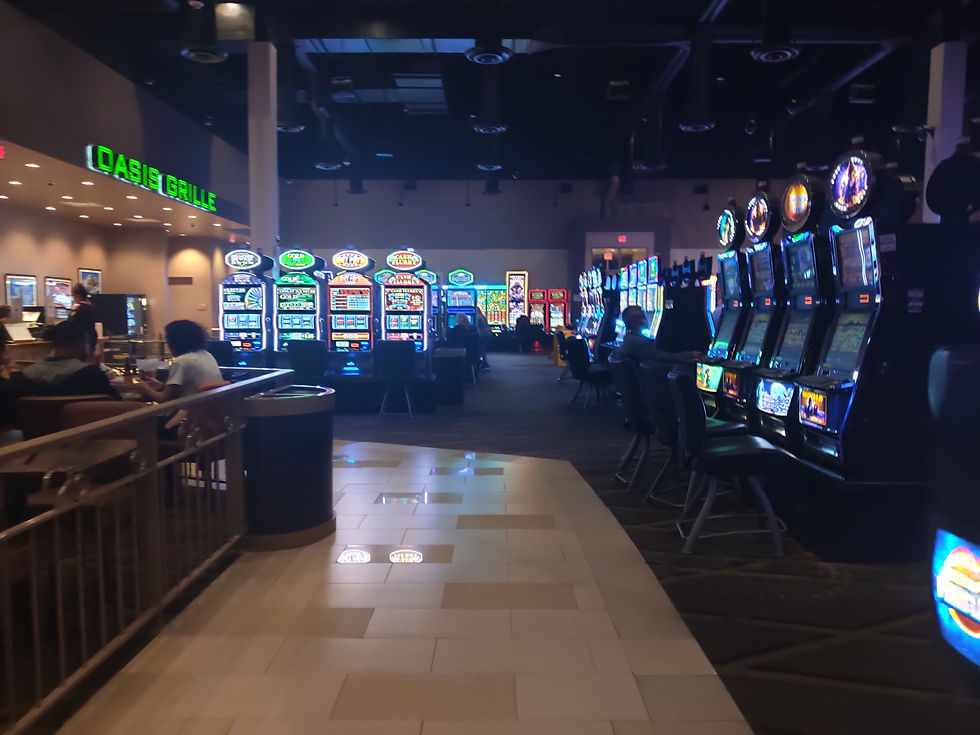
My phone rang as I came back to the car; the caller ID showed the name of the hotel we had booked earlier. The receptionist was calling to let me know they were only accepting bookings from local essential workers and I would have to produce documentation showing I was one in order to check in. Did I have documents of the sort? I replied that I did not and the booking was cancelled. Apparently, staying in a hotel was more dangerous than going to a bar at a crowded casino in which nobody wore a mask.
We had all brought camping gear with us in the hope that we would be able to use it in the Southeast but it had always been too cold for us to try. The weather forecast showed that the low temperature for the night was 47˚ and the area was full of campsites, so we decided it was time to finally break out the tent. Before we could do that, thought, we needed dinner, so we headed to a Japanese restaurant downtown. My father had warned me that Twentynine Palms was basically a third-world country, and he wasn’t wrong. Practically every person we saw looked dangerous and the whole place seemed to be slowly disintegrating into the desert dust. The restaurant was a fittingly strange place, run by a Korean couple who hardly spoke a word of English and had a very hard time understanding what we wanted. They insisted on opening the beer and soju we ordered but allowed us to use the tables and chairs outside, saving us a meal in the car. It genuinely felt like being in a foreign country, and not a very developed one at that.

We found a campsite online and tried driving there after dinner. The site was listed as “bordered by Sunfair, Sunflower, Sunway, and Sunview Roads”. Easy enough, but only one of those roads was actually paved, it was pitch black, and the surrounding roads were named Sun Mesa, Sun Ray, Sun Oro, Sunkist, Sunever… the list went on and I was starting to fear we would be sacrificed to the sun gods. The booking site had assigned us a numbered plot, but the numbers were exceedingly difficult to make out in the darkness and there was no map showing how the numbering system worked. We stumbled around in the darkness trying to find Plot #39 until I found the owner’s number, who said we could use any free plot we liked. With the car headlights serving as our only illumination, setting up camp was a bit of a challenge, but we got it done and went to sleep under a gorgeous starry night. Naturally, Jake’s camera chose that precise moment to run out of battery and our phones couldn’t capture night sky photos without a tripod, so no photos survive of the event.


The temperature was in the 50s as we went to sleep, but we made the rookie mistake of dressing for the evening temperature when camping in the desert. As the night wore on, the temperature dropped by another 10 degrees and the wind picked up, presenting us with the age-old camper's dilemma of staying in the cold tent or getting additional layers from the car at the price of sacrificing precious warmth in the process. Laziness prevailed and we all stayed in our sleeping bags, conserving as much heat as we could. We woke up at first light and watched a beautiful sunrise over the desert as we returned the car to its previous state.
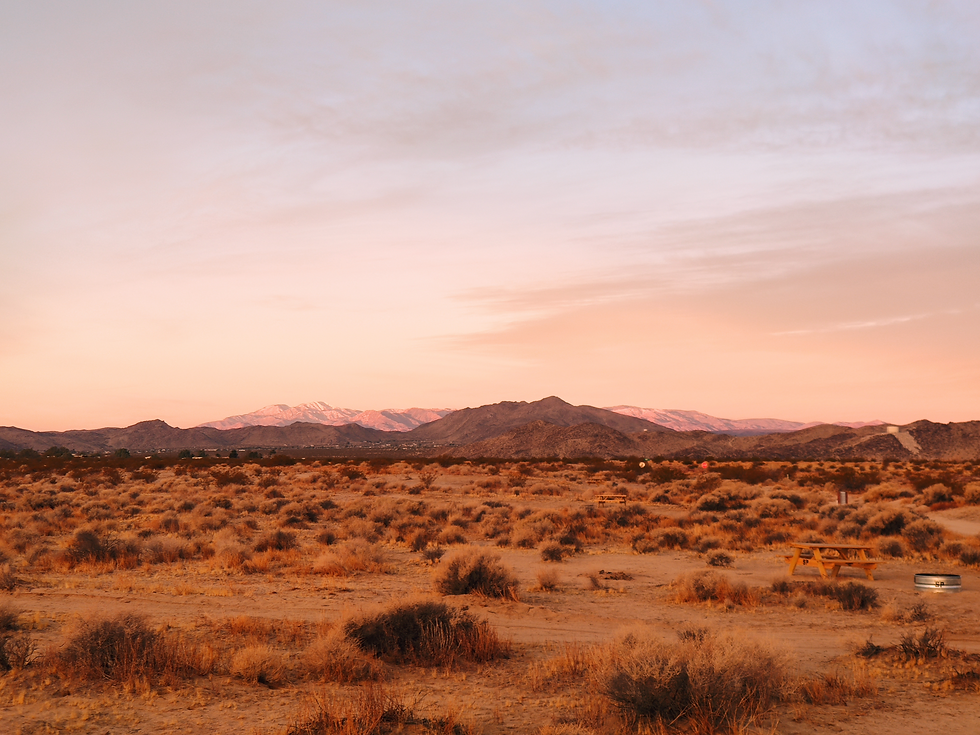
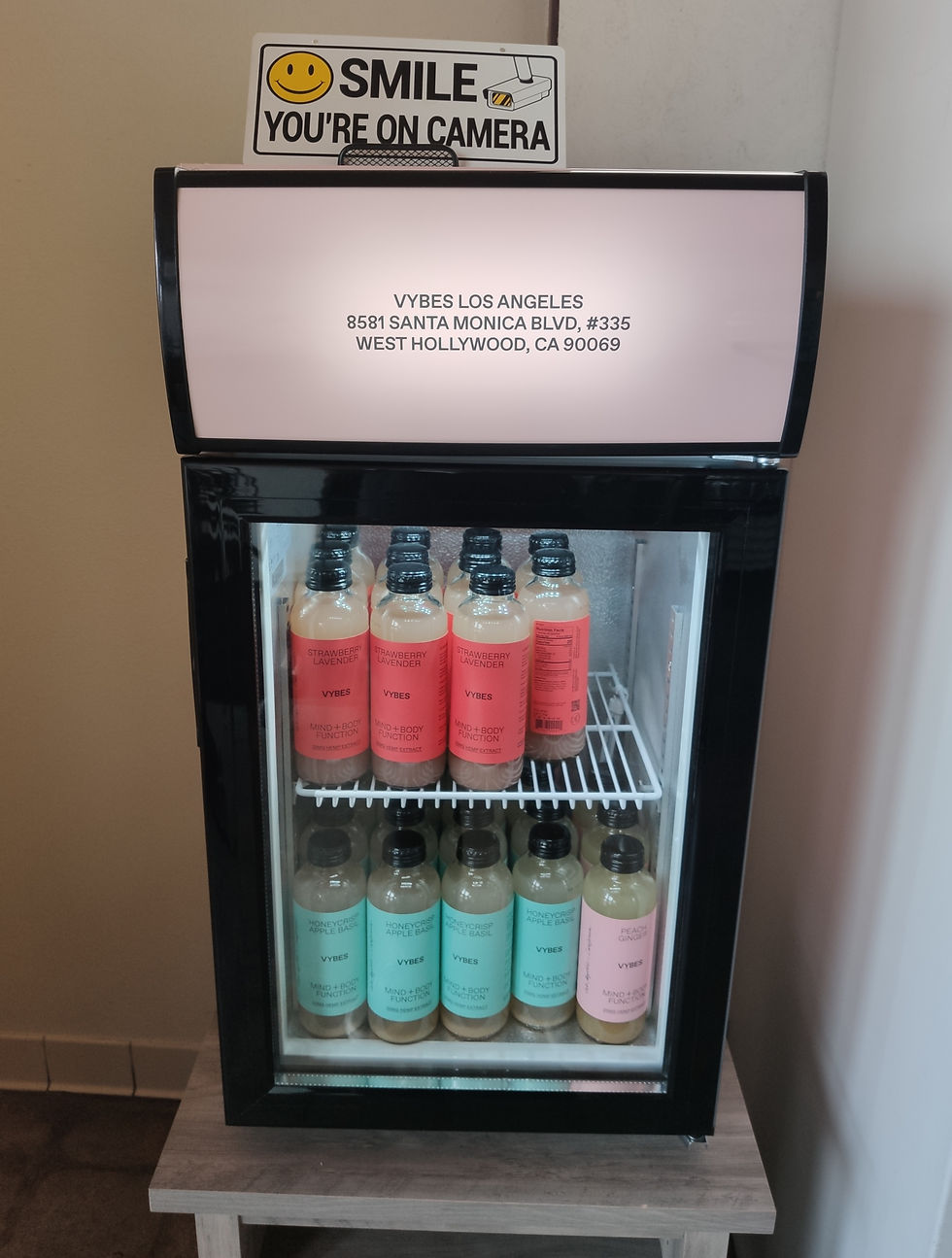
For breakfast, we headed to a little strip mall down the road in Joshua Tree, Twentynine Palms’ yuppie cousin. It was still shady and crumbling, but the crowd was younger and showed clear signs of gentrification. The strip mall we were in had a health foods store, a hemp wear sore, an organic bakery, 3 Black Lives Matter murals, and a vegetarian café where we had our breakfast. I had the worst blueberry muffin I’ve had in a while and a yogurt with an awful lot of sugar for a place claiming to be healthy, but at least I want to hope it was better than the flavored hemp extract they were selling under the name “Vybes: Mind + Body Function”. The whole place was a caricature, but nobody was aware of it.
Dr Seuss Desert
Joshua Tree is the gateway to the national park of the same name, occupying a vast swath of land between the town and the Coachella Valley. The park is located at the point where the Colorado and Mojave deserts meet, which results in a unique ecosystem and a landscape seemingly out of a Dr Seuss book. Jumbled rock formations litter the plain, which is otherwise full of bizzare plants, chief among which is the Joshua tree. According to signs in the park, the Joshua tree is actually a species of yucca, not a tree, though I am not sure of the difference. The park has several short walking trails, and we hopped from one to the next to get a taste of the landscape. The most striking point was the Barker Dam Trail, which leads to a lake formed by a dam built by cowboys over a creek. January is the middle of the rainy season in Southern California, but there wasn’t a drop of water in sight, just a sad-looking dam and lines on the rocks showing where the water used to reach. It was both incredible and terrible to see the effects of California’s drought like this.
We drove south through the park and back into the Colorado Desert, with its familiar flat, brushy landscape. Hoping to avoid a repeat of the previous night, we had made plans with a friend who lives near San Diego to stay with him for the next couple nights. The friend was none other than Shervin, whom we had dropped off in D.C. two and a half weeks prior. The problem was that we had had a faliure in communication and Shervin was not actually home. A group of Yale students was in Malibu, and he was planning to stay the night there. He unsuccessfully tried to get us invited to the Malibu house or have us stay at his without him being here while we brainstormed alternatives.

We drove through Indio and La Quinta, looking for the site of the legendary Coachella music festival, which turned out to be a rather unassuming polo club set among half a dozen golf courses. The density of golf clubs was reminiscent of Fort Lauderdale but in the middle of the desert, verdant green oases in a region plagued by years of severe drought. It baffles me how people aren’t bothered by the ethics of using exorbitant amounts of drinking water so they can play golf on a lush course while cities in the area literally don’t have enough water to drink. I did some research, and the numbers are staggering: An average golf course uses 90 million gallons of water a year, meaning the 124 courses in the Coachella Valley alone use enough drinking water to provide every Californian with 283 additional gallons of water every year.
Following the most direct route, the drive from La Quinta to the ocean was 145 miles, and the urban sprawl was with us every foot of the way: Palm Springs. Banning. Cabazon. Moreno Valley. Riverside. Jurupa Valley. Ontario. Chino. Pomona. Industry. Monterey Park. Los Angeles. The scale of urbanization seemed to defy reality, an endless tapestry of housing developments, strip malls, and highways only interrupted by downtown LA, a needle in a low-rise haystack. I had been to LA once before, but I had never driven across it the long way, a distance further than Munich to Stuttgart.
Sea to Shining Sea
LA has many obscure attractions that appeal to me; one in particular was highly appropriate for a time when COVID had shut down virtually every indoor facility in the area. Barely 1000 feet from the end of the northern pair of runways at LAX is a branch of In-N-Out Burger, an iconic West Coast fast food chain. Due to the predictable direction of the sea breeze, planes of all sizes pass barely 200 feet above the restaurant just before landing, turning the restaurant into something of a Mecca for aviation geeks and planespotters for its up-close views of landing aircraft (read this for a taste). The line for the drive-thru was easily 40 cars long and moving along briskly, firmly burying any lingering doubts we had about the force of the stay-at-home orders in force across Southern California. The food was definitely better than Whataburger (sorry, Texas) and the views didn’t disappoint, even if we had to eat literally on top of the LAX airport sign after being told the outdoor tables were closed. The local seagulls have learned about the place, too, so when Jake dropped his fries on the grass they had disappeared without a trace within 8 seconds flat.
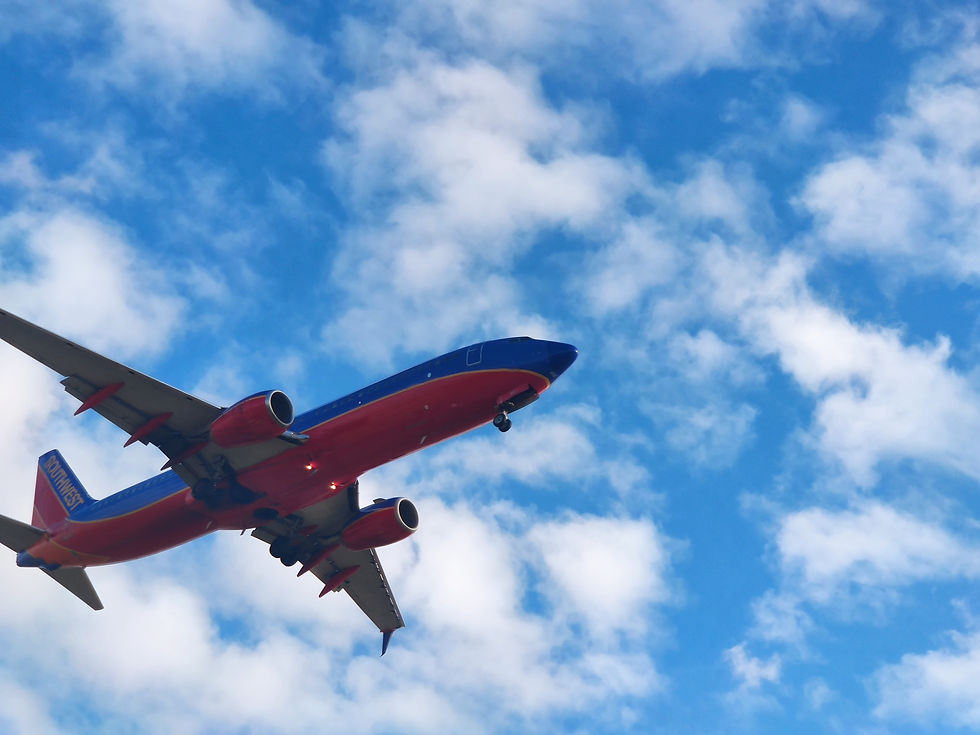
Through social media, we had figured out that Shervin was in Marina Del Rey, practically around the corner from LAX. We drove there as fast as we could to intercept him after several phone calls didn’t go through. Our pursuit was unsuccessful, however, and after searching the marina we realized he had gotten on a boat. The whole thing was starting to feel like a mission from Grand Theft Auto V, which takes place in LA, just with less violence.
The sun was rapidly going down and we had reached the Pacific coast, a milestone that called for a bit of ceremony. We parked the car at a supercharger in Santa Monica and walked down to the waterfront after a brief yet horrifying stop at a public bathroom. We gleefully ran down to the water as the sun set, high-fiving each other on having made it coast to coast. Two guys who looked a bit older than us watched us celebrate and laughed as they shared a joint. As it turned out, they had just completed a cross-country road trip as well, having left Massachusetts for LA just before New Years.

It was no coincidence that we had met other road trippers here. As the terminus of Route 66 and I-10, the Santa Monica Pier was the defining American road trip spot. The pier is full of Route 66 kitsch and shops, which I hadn’t quite noticed the previous time I had visited. The mood was jubilant despite our precarious accommodation situation.

We returned to the car and drove to a hotel we had booked, unsure whether they would allow us to check in. We had specifically chosen this hotel because it wasn’t part of a major chain, which we believed was a major factor in COVID compliance, but if we were turned away, the plan was to make repeated bookings at different hotels until we were admitted somewhere. With the sun just gone down, we had plenty of evening ahead of us if we needed it. We arrived at the hotel, located between La Brea and Beverly Hills, and I got my passport out to avoid any unwarranted questions about my Florida ID. Jake and Richard waited with bated breath as I headed to the reception and asked to check in. To everyone’s relief, no unnecessary questions were asked and I had a room key in my hand within 90 seconds, thus avoiding a potential disaster.
Jake had been waiting to get to LA for days to get good Korean or Taiwanese food. The Korean places all closed early, so we got Taiwanese dumplings from a restaurant in Central City. The restaurant was in a shopping center which was completely deserted on a Friday night, marking the first sign of effective COVID restrictions we had seen in California. We couldn’t eat in the shopping center, but we found some secluded benches in a small park behind it where we could eat undisturbed. The street we were on was under construction, so we were safe from public view. What’s more, the dumplings were fantastic (they actually tasted exactly like the Taiwanese food I had gotten in Japan), despite Jake chiding us that we were eating like foreigners. With nowhere to go out, we spent the rest of our Friday evening watching Narcos with a bottle of wine.
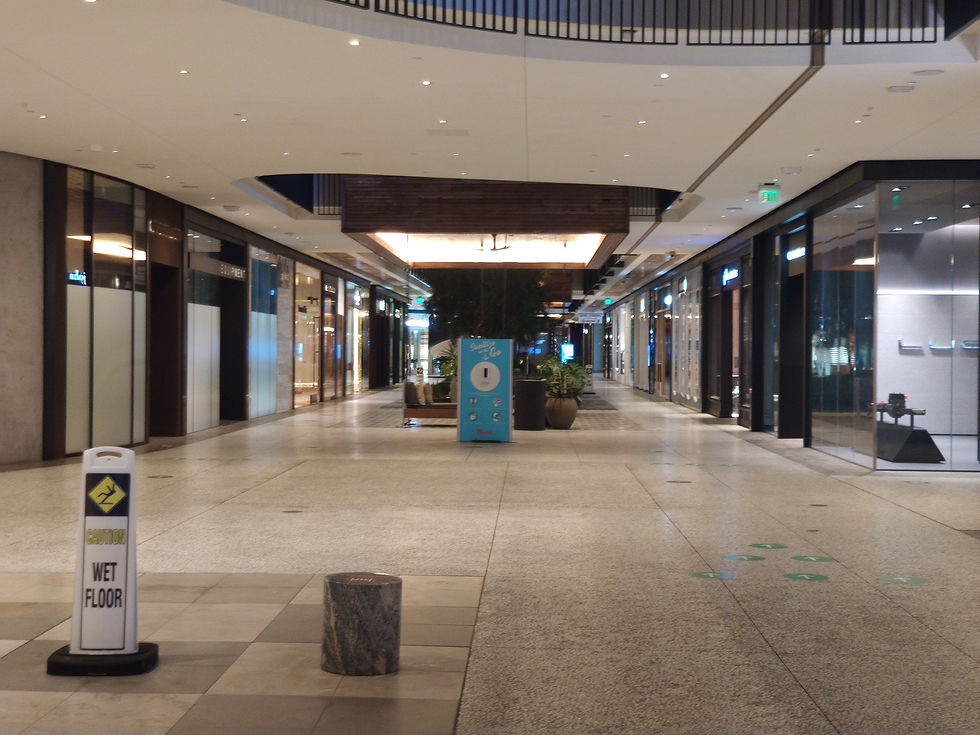
The Chase Continues
We woke up late, finally not in a rush to get anywhere, and headed to a local café for breakfast. The prices were exorbitant, especially considering we couldn’t even eat there, but they somehow managed to make both breakfast and Mexican food well, even if the combination of smells in the car was downright noxious. One thing I distinctly remembered from my previous visit to LA was “athleisure” wear, the pseudo-acceptible athletic wear Angelenos wear while going about their daily business. The café did not disappoint, and my jeans probably made me the best-dressed person around on this weekend morning.
We set off into the Hollywood Hills to satisfy Jake’s craving for luxury houses which had been accompanying us across the country. Whenever we arrived in a major city, he would immediately annouce which neighborhoods had the nicest houses and were demanding of our time. I was happy to oblige and drive down Mulholland Drive, which offers sweeping views of Hollywood and the San Fernando Valley. The air quality was exceptional for LA, but the smog was replaced by gray clouds rolling in and promising rain.
We drove down into the valley and headed west to Thousand Oaks to charge. We were trying to get to Shervin, who was supposed to return to a friend’s house in the area from Malibu. Southern California is Tesla’s home turf (nearly half the cars the company sold in 2020 in the U.S. were sold in California), so the density of superchargers is far higher than anywhere else and we didn’t have to go out of our way to meet him. Our plans changed yet again, however, when Shervin notified us that he had left his things at the Malibu house and would have to pass through there before going home. We offered to pick the things up for him, but the owners of the house were as secretive as they were wealthy and didn’t want us knowing their address, so he would have to meet us on the main road.
We drove up into the Santa Monica Mountains on an absurdly twisty road. As we neared the top, the promised rain arrived in force, coming down in a massive deluge that threatened to blot out the pavement completely. The downpour stopped as suddenly as it had begun, revealing the coveted ocean views and a huge double rainbow that sadly did not lend itself to being photographed.
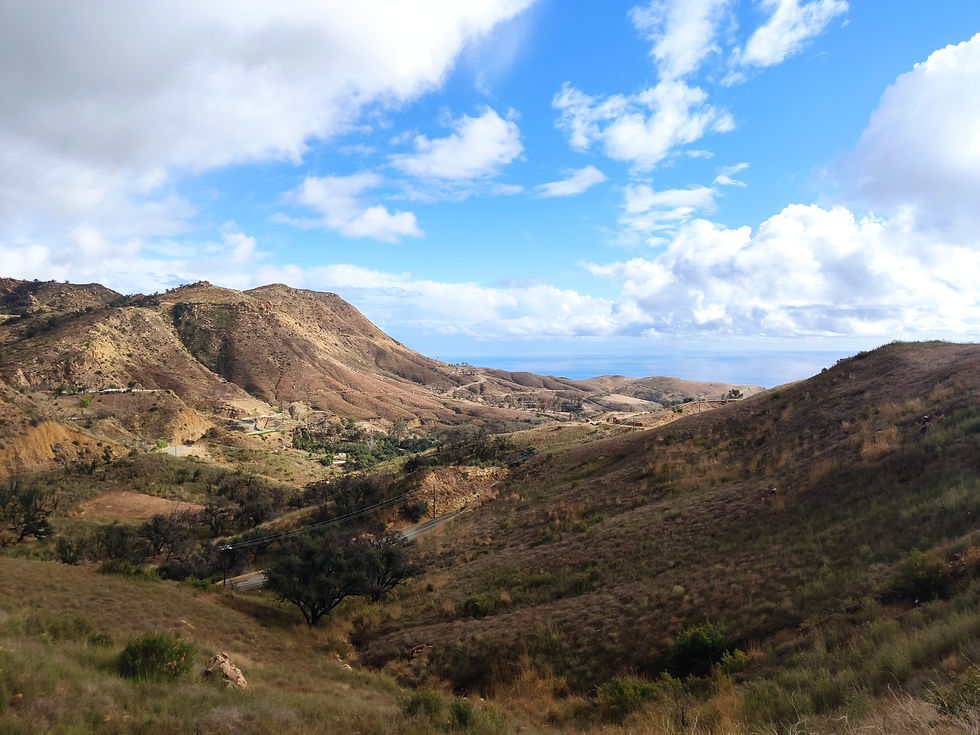

We reached the Pacific Coast Highway waiting for Shervin to send us an address. Fortunately, the sun chose that moment to emerge and we got 10 beautiful minutes at the beach at the bottom of a cliff beneath the road. Jake and I thought we could climb onto some rocks in the surf, ignoring the reality that if the rocks were wet, they were probably going to get hit by waves. Sure enough, the first wave left our socks absolutely drenched, but it was worth it.
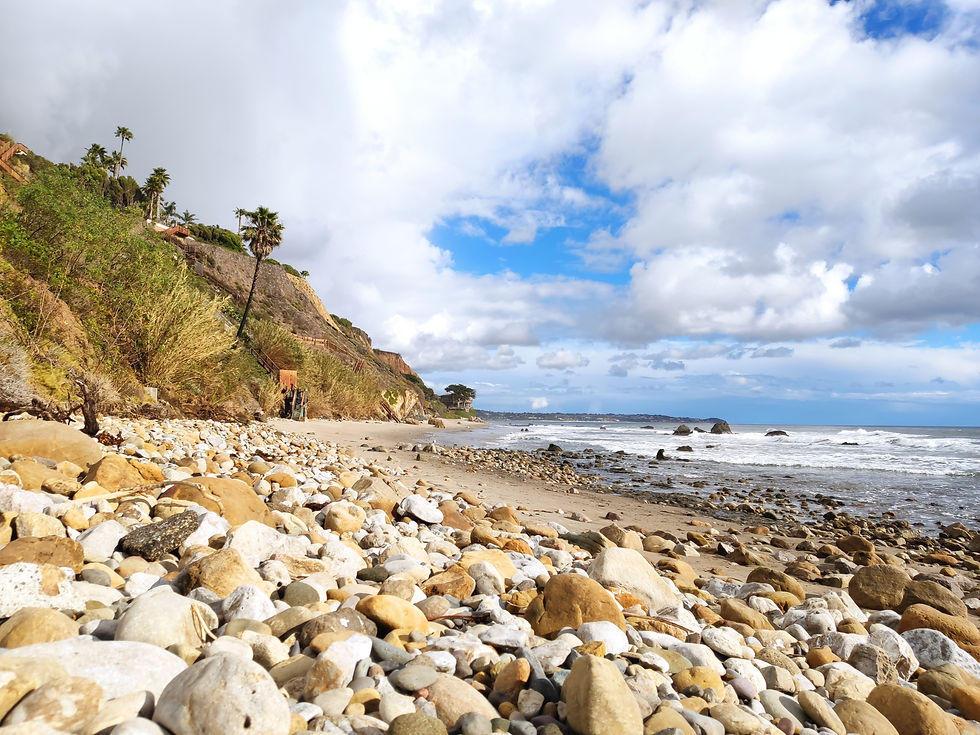
The long-awaited call from Shervin finally arrived and we made our way across Malibu to the provided address. When we arrived, Shervin was stuck behind the gate which couldn’t be opened from the driveway, so he eventually hopped over it and into the car. We set off towards San Diego and it started pouring, obscuring the views of Santa Monica and LA. East-west is the definitively long axis in LA, but north-south (or more precisely, northwest-southeast) is almost as long. The towns and cities of Orange County effectively blend into LA, meaning the drive down I-5 (or as Californians call it, “the five”) was 60 miles of nonstop suburbia until we hit the coastline in San Clemente. I’ve said it before in this blog, but I’ll say it again - as an Israeli, the scale of the cities in the American West is nearly incomprehensible. Some of these cities are actually populous, others definitely aren’t - El Paso has a similar number of people in its metro area as Haifa - but all are vast, built for cars and not for people.
Californian New England
We drive down the coast and arrived in Encinitas, a suburb of San Diego where Shervin lived. He actully lived in a a subdivision of the city called Cardiff-By-The-Sea, which was as ridiculous as it sounds. Not only is the Welsh Cardiff also on the coast, but most of ths street names in the community are English: Manchester Ave, Newcastle Ave, Chesterfield Drive, Somerset Ave, the list goes on. Even Dublin made an appearance, but nothing Welsh got the same privilege. In New England, the concept would have been totally normal, but in Spanish-name-obsessed Southern California, it was pretty amusing. Come to think about it, California’s Spanish name craze is also a little perverse. Sure, the Spanish and then the Mexicans gave plenty of places Hispanic names, but the white settlers who came along afterwards kept the practice going, despite many of them not speaking a word of Spanish. I just love Californians saying things like, “oh, I live in Vista del Mar,” which sounds a lot more exotic to white ears than the name “Beachview” the same development would have received anywhere else in the country.
We arrived at Shervin’s house and met his parents and older brother Ryan, who was a senior at UC Berkeley. Richard and him hit it off right away and went to finish some coding project together while we sat in the living room and allowed ourselves to become victims of his parents’ hospitality. True to their Persian heritage, they were pulling out all the stops, and within a minute of us sitting down there was a huge platter of fruit and a bowl of bonbons on the table, while the kitchen became a hive of activity in preparation for dinner. The food was fantastic and the older generation was impressed that I knew the word tadigh, the crispy part of every Persian rice dish (thank you, members of my father’s synagogue).
After dinner, we picked up Shervin’s high-school friend Zach and headed to his community center, which as I had discovered on this trip was code for a country club that didn’t contain a golf course. We had the place to ourselves and had a fantastic time in the hot tub in an unofficial wrap-up of the trip.
The Other Side of SoCal
The next day was our final full day and we dedicated it to exploring San Diego. Shervin was in charge, though, and Richard had gone to visit his great-uncle who lived in town so it took forever to leave the house. We rendezvoused with Richard at Mission Valley, a shopping mall midway between Encinitas and downtown, and dropped Shervin’s car at the parking lot. Back in the Tesla, we drove to Embarcadero Park, located on the waterfront downtown. The views were ok, but everybody was getting hungry so we had to move on. Jake went to help Shervin satisfy his craving for fast food (now that I had met his dentist father, that made a lot more sense), while Richard and I searched for less generic options in the so-called “East Village” - no resemblance to its name-twin in Manhattan.

San Diego is famous for its year-round warm and sunny climate, which had been one of the primary factors behind the massive population boost that propelled it to 8th place on the list of largest cities in the U.S. With that population growth and the promise of good weather, however, came another undesired population: the nation’s homeless people. New York has the largest homeless population in the U.S., but nowhere are homeless people more visible than in Southern California, which is home to 3 of the 5 cities with the largest homeless populations in the country. Despite a steady (though slight) decrease in numbers of homeless people in recent years, San Diego comes in fourth on that list with over 8,000 homeless residents.
Many of the sidewalks in downtown San Diego are full-fledged homeless encampments, with tents, tarps, and other makeshift shelters taking up much of the space. Streets have become communities of sorts, where homeless people play games and have meals together in “common areas” between different shelters. The numbers of homeless people are staggering, forming a parallel world existing simultaneously with the otherwise prosperous downtown.

In recent years, as homeless populations have skyrocketed Californian city governments have stepped up their efforts to combat homelessness, though they have been criticized for being primarily motivated by the damage done to the property values of their wealthier constituents. Of particular note is Proposition HHH, a $1.2 billion bond measure passed by the LA city government in 2016 with the goal of constructing huge numbers of homeless shelters in the city. To not be perceived as removing homeless people from wealthy neighborhoods to be relocated to poor ones, the bill stipulated that equal numbers of shelters would have to be constructed in every part of the city. NIMBYs in the nicer parts of town did not take this lying down and pushed back with a swarm of lawsuits, forcing the government to conduct expensive environmental reviews and hold public hearings, delaying construction of shelters by years and causing costs to balloon. Over four years later, the government is nowhere near meeting its construction targets with the first shelter only opening its doors last January and the average cost of a unit has increased to an incredible $560,000. Construction on the remaining 111 shelters is expected to last at least another 3 years, and even when they are done and running at full capacity they will barely provide housing for a quarter of the city’s homeless population. I chose to include this story because it blew my mind when I first heard about it in class this fall and because it’s so rife with symbolism for the larger issue of homelessness reduction in Southern California. When all is said and done and Angelenos have spent over a billion dollars to barely make a dent in their city’s homeless population, I hope some of them will ask if there isn’t some easier way to fix it (though I remain rather skeptical on this front). In my mind, the issue is a stain on the conscience of the American public which hardly devotes a second of thought to its homeless population except when crossing the street to avoid it.
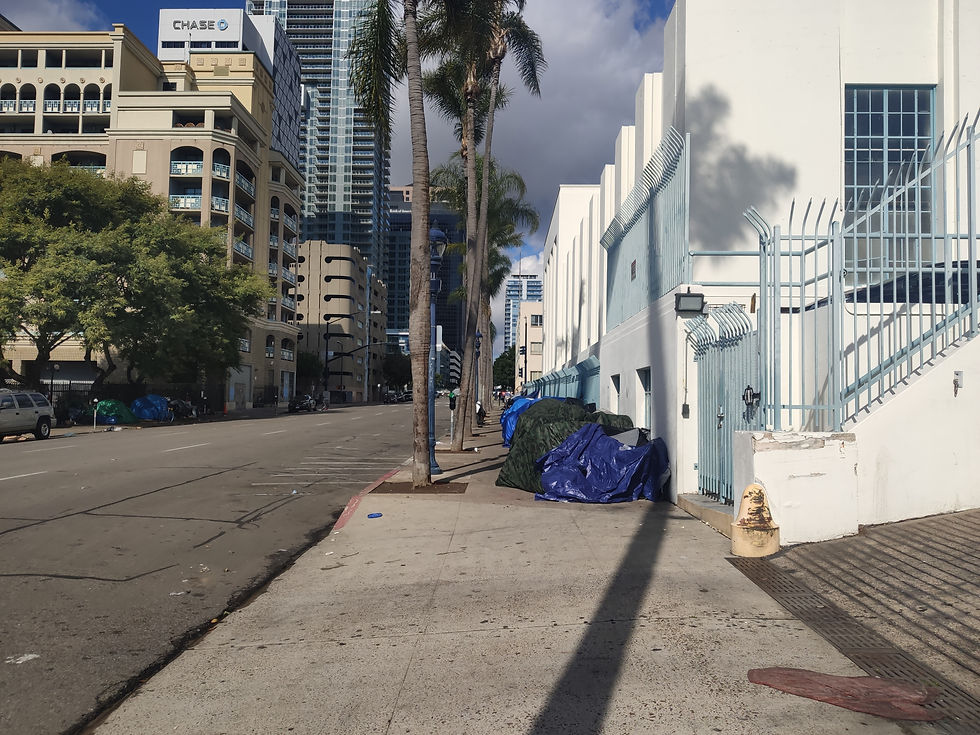
Reeling from the scenes I had witnessed but satisfied with San Diego’s local burger offerings, I sent Jake and Shervin our location to pick us up. We drove across the San Diego Bay over the absurdly tall Coronado Bridge. A look to the south from the bridge makes the reason for its height clear, as the shore just south of downtown is the home port of many components of the U.S. Pacific Fleet, including its aircraft carriers. San Diego is actually home to the largest military community in the U.S., and indeed the area around the Bay feels very heavily militarized. Ships depart from here on tours of duty all around the Pacific (recently rebranded as the Indo-Pacific in an effort to send a message to the Chinese), Navy SEALs go through their infamous BUD/S training on Coronado, and Marines receive amphibious training at Camp Pendleton to the north.
A Final Border Jaunt
Of all the affluent beach communities I’ve visited this winter break (and between South Florida and Southern California there were many), Coronado feels the most low-key. Nothing is particularly glamorous or flashy and it just feels like a place normal people live, laid-back and seemingly very far removed from the city across the bay. I wish we could have spent more time there, but we wanted to make one last foray towards the Mexican border on this trip.
Getting to the border proved to be much more of an ordeal than we had thought. We specifically wanted to get to Border Field State Park, the Pacific beach where the U.S. meets Mexico and people sometimes play cross-border volleyball over the fence. We were on the coast in Coronado but we first had to go the long way around the Navy airfield in Imperial Beach to return to the coast. We drove along a terrible road lined with horse farms until we saw the fence several hundred feet up a hill from us. The condition of the road, which at one point had a pothole-strewn puddle a foot deep and was generally flooded with muddy water, didn’t seem to bother the Border Patrol folks, who sped up and down it in SUVs and ATVs (honestly, it looked like they were having a great time).


The road to the park was closed and those leading to the border itself were off-limits to civilians, so we found ourselves trapped in a narrow corridor between the border to the south and the Tijuana River to our north. We tried walking to the beach, but the muddy trails didn’t seem to lead anywhere but the wrong direction.
Defeated, we drove back east and reached San Ysidro, a suburb of San Diego and the southernmost city in California (the “logo map” of the continental U.S. doesn’t quite reflect it, but the California-Mexico border runs a little north of due east). San Ysidro also normally contains the busiest border crossing in the world, since unlike El Paso-Ciudad Juarez, the San Diego-Tijuana metropolitan area - by far the largest along the U.S.-Mexico border - only contains a single crossing. We parked the car a dozen feet north of the fence and walked over a bridge across the highway crossing. Unlike most of the border, the fence here at parts actually becomes a wall, which is what many people think the entire border looks like, no thanks to Donald Trump.

We had obviously done our research about crossing the border before arrival and it was very different from usual, when Americans could easily hop across to Tijuana and come back a couple hours later. According to both countries, the border was only open to “essential” travel and a test mandate had recently gone into effect, requiring all Americans returning from any other country to provide a negative COVID test result to re-enter the country. Standing on the bridge and watching the vehicle traffic, it looked like there was an awful lot of “essential” travel happening, with dozens of cars (all with California plates) streaming across the border in both directions every minute. The pedestrian crossing seemed fairly busy, too, which was even more surprising.

A Little Taste of the Soviet Union
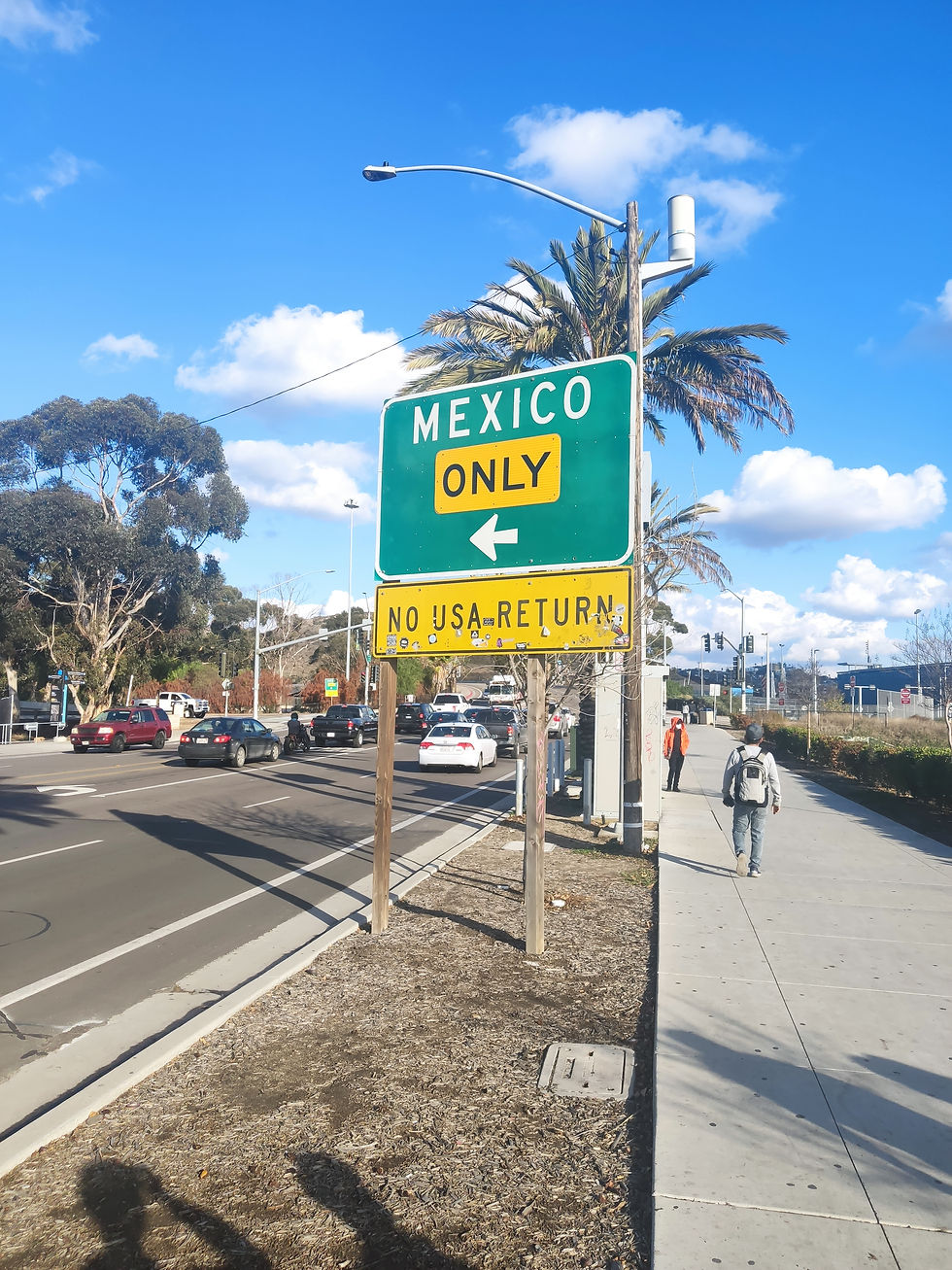
San Ysidro struck several familiar chords with me. We had parked our car in the lot of a giant outlet mall (what else?), but it was on the bridge where things started to get interesting. On one hand, the heavily militarized and very clearly one-sided border was reminiscent of Israeli checkpoints in the West Bank, with lots of cameras and barbed wire. Even the big gray buildings containing the immigration and customs officials looked like those used by the IDF near Palestinian cities. On the other hand, the border economy that sprung up around the crossing looked like a land border in southeast Asia or the former Soviet Union, except everything was in Spanish. There were little stands for changing money and purchasing vehicle permits for Mexico, and the second floor above the saddest McDonalds I’ve ever seen was a one-shop flea market selling absurdly cheap clothing and housewear products. Without a doubt, however, the most third-world aspect were the men standing around offering us seats in vans going to LA, Anaheim, and a slew of other cities. In the Eastern Bloc these were called matrushkas, in East Africa they were called matatus, but American English doesn’t have a word for them and I had no idea they even existed in the U.S. In an era when most of the developed world has all but erased physical evidence of borders, I suppose it’s just another way the U.S. stands out.

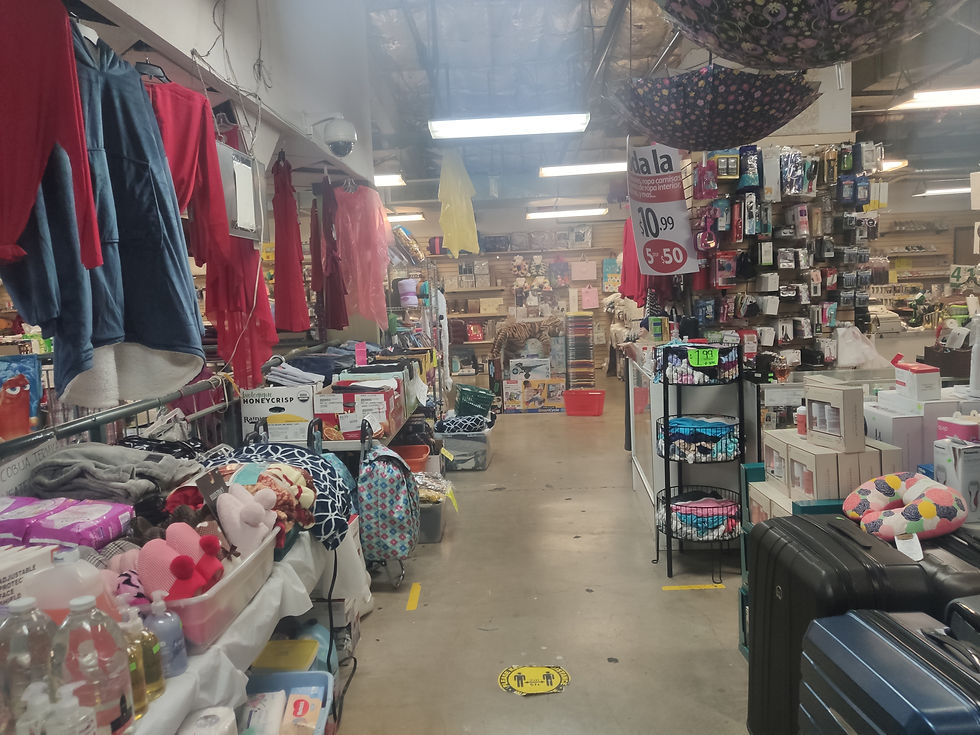
We drove north through town and stopped to charge a final time. With the car parked at Shervin’s, we began the torturous process of removing all the trash and belongings that had accumulated at an incredible rate in the car over the course of several weeks. For dinner, Shervin took us to the “downtown” portion of the Pacific Coast Highway in Encinitas, which housed The Taco Stand, a restaurant that wasn’t actually a stand but was very popular with surfers. We walked down to the beach to eat, where I realized I had accidentally ordered a burrito with avocado, but it was dark enough I could try to ignore it. The burrito was one of the best I’ve ever had, and I finished it just in time before the wind picked up and it started pouring. We had really struck out on our luck, as San Diego got around 15% of its annual rainfall in the 36 we spent there, but the drought was so severe I was happy to take one for the general team.
The Sunrise Express to the Police State
We went to sleep early so we could wake up before 5 to catch a 5:42 train to LA from Oceanside. Jake and I were flying together to Miami, but Richard had a later flight to New York and stayed at Shervin’s. The train and airport bus rides were uneventful and we made it to LAX with plenty of time to spare to catch our flight, with a cast of passengers so colorful it looked like it belonged in a bad TV show (of course we were sitted next to the Orthodox Jews; those are the rules of the format). For the first time in my life, I used a driver’s license instead of a passport to go through security, which at least in my mind showed how quickly I was assimilating to American life. I was busy congratulating myself until the machine refused to read my ID. “Does it not like Florida licenses? I asked. “Try it again,” the agent said, “you should be fine unless you’re that Florida man I keep hearing about on the news.” Jake and I both got a great laugh out of that.
I was back in Miami for a few days, where more adventures and cultural experiences awaited. Time is running out, though, as I move back onto campus, adjust to life in the police state Yale has become, and survive another bout of quarantine, the longest I have been subjected to so far. I hope to have the time to write something short about my takeaways from this journey, but either way, this chapter of The Wandering Penguin must end here. I hope to return soon enough for additional ones further afield!


















コメント